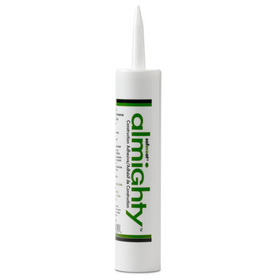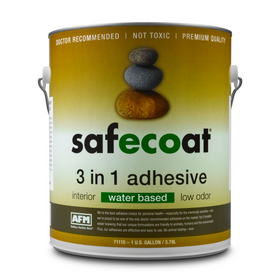
How Will COVID-19 Impact Home Design?
Last Updated: Apr 13, 2025Think back to your life a year ago. You were going to work each day, seeing your friends and family regularly, not worrying about things grocery shopping or takeout. Now, nine months after the first shutdowns and spikes in cases, reflect on how your life has changed. What is one of the first things you think of? Likely, it is your home – notably, how much time you have spent at your home this year.
Before the pandemic, the home was likely a place you primarily spent your evenings and weekends—but not your entire workweek. Now, your home is functioning in many ways that it may not have been designed for. It's now a home office, a classroom, a quarantine center, a vacation home, and more. Your home is more important than ever.
This article will discuss some trends that we have seen in the housing industry due to the COVID-19 pandemic, broken down by amenities and then specific design features. But first, we wanted to give a few examples of how epidemics have changed home design through the years.
Table of Contents
- How Have Epidemics Changed Home Design in the Past?
- What Spaces Will Homes Add As a Result of the COVID-19 Pandemic?
- What Design Features and Amenities Will Homes Implement Due to the COVID-19 Pandemic?

How Have Epidemics Changed Home Design in the Past?
Sleeping porches and powder rooms are just two design features that were born out of past pandemics.
Sleeping Porches
Screened-in decks or balconies, either on the front or back of a house, were designed to combat tuberculosis in the late 19th and early 20th centuries. At the time, sunlight and fresh are were thought of as the best cures for this disease. A typical architectural feature, especially in warmer climates, many people do not know the origin of sleeping porches.
Powder Rooms
Half bathrooms, also known as powder rooms, were initially designed to curb germs. They allowed a transition space for visitors to clean up and wash their hands to limit exposure to the rest of the house. Now that we know the value of washing hands with the COVID-19 pandemic, these powder or mudrooms may become very popular again.

What Spaces Will Homes Add As a Result of the COVID-19 Pandemic?
Since March, we have noticed a trend towards design changes in the residential industry. Here, we will go over a few of the most evident ones that may influence how homes are designed in the future.
- Office Spaces
- At-Home Classrooms
- Storage
- Outdoor Spaces
- Home Gyms
- Flex Spaces
- Accessory Dwelling Units
Office Spaces
If you have begun working from home this past year, you likely have had to adapt space in your home to fit your needs. Dedicated workspaces separate from lively parts of the house like the kitchen are extremely important in creating a professional work-from-home setup. Future home designs will likely move away from the open floor plan trend. Instead, designs will create pockets of privacy for working and studying, possibly even with intentionally designed backgrounds fit for Zoom meetings! In a recent Zillow survey, 27% of consumers surveyed shared that they would consider moving to have a house with more rooms.

At-Home Classrooms
Like many remote workers, students of all ages have had to adapt to working from home. Long-term, your kitchen table is probably not going to be a practical classroom setting. Specific parts of the house may be designed with e-learning in mind to minimize background noise and distractions and allow students to have a seamless online learning experience.

Storage
Remember in March when everyone was buying toilet paper? We do! Yet, many homes are not designed with ample storage space. In a world where two-week quarantines are recommended after potential exposure to a pandemic, having ample storage space for groceries, and household goods is essential. Given that your home must now sometimes function also a quarantine bubble, extra storage for bulk items helps to give peace of mind for unpredictable times.

Prioritized Outdoor Spaces
Staying at home has limited some people's ability to enjoy outdoor public spaces. Outdoor recreation is not just beneficial for our physical health. It is proven to improve our mental health as well. Since our mental health is just as important as our physical health, ensuring that our homes incorporate outdoor spaces will have a positive influence on our overall health. In both existing homes and newly constructed homes, outdoor space has become increasingly popular. And so have vegetable gardens and outdoor furniture!

Home Gyms
Dedicated spaces for fitness are rising in popularity, as many public gyms have been closed. Meyers Research discovered a drastic increase in Google searches for "home gym" since the beginning of the pandemic.

Multi-Use Flex Spaces
Your home is now where you eat, sleep, work, study, relax, and more. As such, future home design trends will likely incorporate multi-use, flexible spaces that can adhere to a variety of needs. This separation will also be critical for activities (like Zoom meetings) that need minimal background noise.
Accessory Dwelling Units
In line with the above amenity, we may see a rise in the popularity of accessory dwelling units (ADUs), also known as granny flats, laneway homes, or in-law suites. These are becoming more mainstream, especially in urban areas that want to increase density without creating urban sprawl. ADUs can offer separate dwellings for home offices, classroom settings, or guest houses for visitors or family members who need to quarantine.

What Design Features and Amenities Will Homes Implement Due to the COVID-19 Pandemic?
- Touchless Technology
- Naturally Antimicrobial Materials
- Softer Color Palettes
- Biophilic Design
- Efficient Ventilation
- Air Quality and Purification
Read all about these COVID influenced design features below.
Touchless Technology
Now more than ever, smart home technology that incorporates touchless technology is making its mark on the residential industry. Touch-free toilets, faucets, trash cans, light switches, and thermostats are all ways to curb the spread of germs. According to a survey of over 3,000 households, over 50% wanted touch-free faucets, appliances, and smart toilets.

Naturally Antimicrobial Materials
Materials that can repel viruses have already become increasingly in demand. Copper alloys such as brass and bronze are examples of these materials. One part of the home, in particular, that may see an increase in antimicrobial materials are kitchens – a part of the house where people tend to congregate. Antimicrobial materials may be installed in areas that are touched often, such as doorknobs and faucets.

Softer Color Palettes
We all know 2020 has been mentally taxing. As such, many are turning to softer color palettes within their homes to create a relaxing environment. More soothing paint colors, lighter furniture, and natural accents can all achieve a tranquil setting.

Biophilia
Biophilic design, the "architecture of life," is the idea of taking lessons from nature and applying them to the built environment. Or more literally, the idea of bringing the outdoors in through the use of plants or organic materials and designs. Biophilic design not only helps to create a calming environment but can improve your home's air quality, too.
Efficient Ventilation
Achieving good air quality through efficient ventilation is perhaps the most effective design change to combat pandemics. Efficient ventilation goes beyond opening a window or installing a screen door. To achieve year-round ventilation, you need an effective HVAC system.

Focus on Air Quality
Beyond ensuring efficient ventilation, which can benefit air quality, there are other ways to achieve this. Many have turned to air purifiers, which can significantly benefit your health and fight against mold, dust, pollen, smoke, smell, and bacteria. Read our introduction to air purifiers here to see if your home could benefit from one.
Not sure if these design trends will stick? Bank of America conducted a survey that found that over 70% of Americans have done a home improvement or renovation project. Home Depot, Lowe's, Tractor Supply, and other home improvement companies have seen increased stock market values since the beginning of the pandemic. Contractors all over have seen a massive spike in demand, while the cost of building materials has seen a steady incline since March.
Just as past epidemics have influenced home design, so will COVID-19.
Maria Saxton
Located in Roanoke, Virginia, Maria Saxton holds a Ph.D. in Environmental Design and Planning from Virginia Tech. She works as an Environmental Planner and Housing Researcher for a local firm specializing in Community Planning, Architecture, Landscape Architecture, and Historic Preservation. Her dissertation explored the environmental impacts of small-scale homes. She serves as a volunteer board member for the Tiny Home Industry Association.











